
obody ever said writing historical fiction was easy. Not only do you have to create vibrant characters, captivating plotlines, and a voice that leaps off the page, but you also have to do hours upon hours (even years!) of research, convince readers that you know as much or more than they do about their favorite time periods, and get every last setting detail exactly right. Why would anyone undertake such a huge task like writing a historical fiction novel, when writing itself is already difficult?
Five ladies, who have all succeeded in the historical fiction genre from middle grade to adult, attempt to shed some light on what it’s like to write these novels, how much research it takes, what to do with all the facts and figures when telling a story, and how to get a historical fiction book noticed among the vampires, werewolves, and spy thrillers. They also share some of their favorite writers and tips for starting out in this difficult genre.
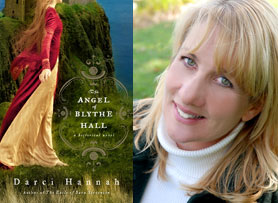
“The true art of writing good historical fiction is the ability to take the facts, sift through them, and turn them into a compelling story.”
(Photo: Darci Hannah)
Research
When beginning any novel, writers probably have to do some research on subjects like a character’s profession, a favorite recipe, or even proper police procedures. But when you’re writing a novel that’s set in Imperial Russia, such as author Adrienne Sharp did in The True Memoirs of Little K, you have to research for years.
“I was still researching even when my novel was in galleys, so I never really stopped,” Adrienne says. “I was still writing in new details when they pried the galleys from my hands.”
She had quite a list of topics to research for her book, from the study of nineteenth- and twentieth-century Russian ballet to the three-hundred-year Romanov reign, as well as the court life of St. Petersburg, the Russian revolution, and everything there was to know about her two main characters, Mathilde Kschessinska and Nicholas II.
All the research paid off though, as The True Memoirs of Little K was a finalist for the California Book Award, one of Oprah’s Book Club’s Ten Fantastic Books for Fall 2010, and a Historical Novel Review’s Editors’ Choice.
Darci Hannah, another successful historical fiction author who wrote The Exile of Sara Stevenson and The Angel of Blythe Hall, sets her stories in Scotland in the years 1814 and 1492, respectively. She agrees with Adrienne that it’s hard to stop researching while writing. But she also offers this advice: “The trick is to understand what kind of story you’re going to tell, understand your target audience, and most importantly, to know just how much history to include without bogging down the flow of the narrative.”
She makes it sound easy, but those are issues that many historical fiction writers struggle with—whether beginners or pros. It’s hard to part with the research, but historical fiction writers have to remember the important piece of the puzzle is actually the story. The research should make the story richer, and most of the facts and figures are just for the writer’s benefit—similar to character profiles created before writing a novel.
Beverly Patt, author of the middle-grade novel Best Friends Forever: A World War II Scrapbook, believes sometimes the huge amount of research can actually hinder the story. “It’s after I have all this great information, but I can’t conceptualize how I will integrate all of it into a seamless, interesting story . . . If you are writing for the general public, you have to assume they know very little and would have to include more backstory than if you are writing a more sophisticated piece for history buffs. Again, you must remember to balance history and plot/story to keep your reader informed enough to follow what’s going on, but not bogged down in background.”
She also mentions that in her WWII book, she included details about Japanese internment camps in the text because she assumed her readers would know very little about them. Then she included an author’s note in the back of the book to inform readers about details leading up to WWII that didn’t fit in the text, but that would be important to know for her story.
Darci agrees. “The true art of writing good historical fiction is the ability to take the facts, sift through them, and turn them into a compelling story.” She reminds writers that they are the ones with the power—to decide which facts to include and which ones to leave out. But she also offers this sound advice, “However, don’t ever change important historical facts to fit neatly into your story or leave out the really big, history-making events. Readers of historical fiction are sharp cookies, and they know their stuff.”
Then there’s author Karen Kondazian, who wrote The Whip, which is the fictional story of true life Wild West character, Charley Parkhurst. Parkhurst pretended to be male to keep a job as a stagecoach driver and seek revenge on the man who killed her family. Karen had a slightly different approach to writing her historical fiction novel—researching after she wrote.
This process might work for authors who get bogged down in all the facts and figures before beginning to write their novel. Karen did know the story and some background of Charley through a magazine article she had read many years before.
“In the first draft, I simply wrote the story. I wanted the characters to find their own life and flow without the disruption of research,” Karen says. “In the next twenty-six drafts, I continuously researched everything from the perfumes that women wore, the medications people took . . . the exact time it took a stagecoach to get from one town to another. And every other little detail . . . Even to what a woman would do when she had her period.”
The good news for historical fiction writers is that there are many sources to use for research today. Most writers begin with the Internet and then move on to books for more research, trying to use primary resources when possible. Traveling to the location where the story takes place can also work during this stage.
Middle-grade author Clara Gillow Clark, who wrote Hill Hawk Hattie, thinks the best research isn’t on the Internet or in books. “My favorite places to search are old newspapers on microfilm, museums, and historical societies that have wonderful treasures like diaries, maps, photographs,” Clara says. “Seeing and touching these materials bring the past world much closer emotionally, I think. At least it does for me.”
If the time period you’re writing in is not that long ago, you may be able to interview people who lived during your story events. Bev discovered this when researching World War II and internment camps. “The very best [research], however, was the first person interviews I did with individuals who had lived in the Japanese internment camps,” Bev says. “They cleared up so many questions I had—questions that no book or website could answer.”
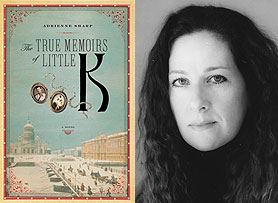
“When I wrote the line ‘I have always admired an opportunist, being one myself,’ I knew I had her.”
(Photo: Adrienne Sharp)
Finding the Storytelling Voice
Once writers have enough research to start, then the storytelling takes place. So, how do they write believable characters and find their voice?
For Adrienne, Darci, and Bev, they found their character’s voice during the research and while reading about their subject matter.
Adrienne remembers having difficulty at first with her character’s voice. “Not letting the history swamp your characters. It wasn’t until I found Mathilde’s voice—impertinent and self-knowing—and her goal—to become a Romanov and to have her son take his rightful place at court—that my novel came alive. When I wrote the line ‘I have always admired an opportunist, being one myself,’ I knew I had her.”
“What worried me more was dialogue,” she adds. “But having Mathilde tell the story of her life from her deathbed freed me from having to use much dialogue, which, by the way, I did not enclose in quotation marks, which for some reason freed me even more.”
Bev mentions that finding a historical fiction character’s voice is more difficult for her than a contemporary character because she hears those voices all around her every day. But she reads newspapers and other fiction from the time period her story is set in to help her develop her characters’ voices. She doesn’t want them to sound stilted.
Clara had one of those moments that as authors we can all hope for—the voice of Hattie just came to her! “Her voice came to me one day when I was out walking, and she just stuck around. She was this powerful voice inside that needed me to get her story down on paper.”
Karen’s experience even differed from this. “It took many drafts to find Charley’s voice. At first, it was my personal voice; but as I grew to find the wounded child that lived inside her and the survivor that she became, the voice started to take on a life of its own.”
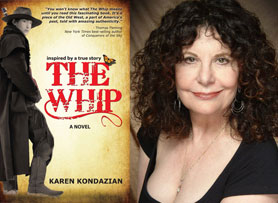
“I had to change where a character was going because I found out about a devastating plague that had hit Sacramento . . .”
(Photo: Karen Kondazian)
Challenges
All writing comes with challenges. But the historical fiction genre seems to have some that are unique to it. Bev states, “Sometimes I could kick myself for starting a historical fiction piece because I end up feeling hemmed in by the facts or the dates or the timeline!”
Karen agrees, especially since she wrote the first draft and then researched. She often had to change storylines the more research she did. “In one instance, I had to change where a character was going because I found out about a devastating plague that had hit Sacramento at that time and drove everyone out of town, killing thousands of people.”
As most historical fiction authors will tell you, there are always readers that seem to know everything about a given time period and are more than happy to write to authors and point out the mistakes they made. Authors should try to keep as close to the historical facts in their fiction story as possible. For example, if you’re writing a novel set during the early days of the United States, you don’t want to change the first president from George Washington to some unknown person—everyone knows this fact, and your book becomes unreliable. You can always add a character to his life or make up dialogue for Mr. Washington, but don’t change important known facts.
Adrienne presents a perfect example from her novel, when explaining her favorite part of writing historical fiction: “Weaving together what actually happened historically with the actions of my own characters. In one of my favorite scenes, . . . I used Count Beckendorff’s account of the imperial family’s 1917 departure from Tsarskoye Selo to Siberia, where they would eventually be murdered, and planted Kschessinska and her son into the scene. Every detail of that scene is historically accurate—with a twist.”
Darci and Clara hate when those details go missing right when they need to check on them and include them in the story. “Also, it can be very troublesome when you’re looking for a specific, obscure little detail, and you can’t seem to find it. I hate it when that happens!” Darci says.
Karen also mentions the dreaded question that many historical fiction writers have asked themselves—often at the most inopportune time, such as in the middle of an adventure scene, “What would my character say here, and was that word even invented before my time period occurred?”
She uses an example of the word okay. “It was incredibly time consuming to have to look up so many words in the dictionary to find out if they even used that word yet. ‘Okay’ is a good example. Apparently it was an amalgamation of a word that came from the American Indian and only started being used in the early 1840s.”
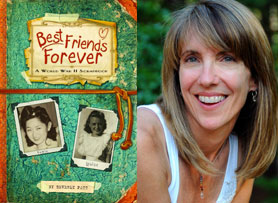
“It’s been my experience that just the words ‘historical fiction’ do not have the ‘wow’ factor for kids . . .”
(Photo: Beverly Patt)
And then there comes the marketing challenges. Most people you talk to like historical fiction; many have even read popular novels such as the Laura Ingalls Wilder books or Gone With the Wind. But let’s face it. Most historical fiction writers aren’t becoming multi-millionaires like Stephenie Meyer, Stephen King, and J. K. Rowling.
Bev understands the lack of appeal of her genre to some readers. “It’s been my experience that just the words ‘historical fiction’ do not have the ‘wow’ factor for kids that other genres like fantasy or humor or romance might . . . So, if I’m targeting kids, I focus on the relationships of my characters, their problems, etc.” She goes on to explain that she talks about how the two main characters in Best Friends Forever are separated because of World War II and how one is ostracized because she is Japanese and shipped off to an internment camp. “Well, that catches their attention.”
She adds, however, that teachers and librarians love historical fiction, so she tries to show how her books fit in with the curriculum.
Clara takes advantage of the local angle, which is something many authors can do. She’s lucky because she lives in the area where she set her books, so schools, libraries, and historical societies will ask her to speak—she can do these engagements without much travel. But even if you don’t live where your books are set, you could still take a trip to that area, fit in as many speaking engagements and opportunities to sell your book as possible, and then write off the trip on your taxes.
Darci writes for the adult audience, which presents its own set of challenges. She explains, “The quick answer is that it largely depends on what kind of historical fiction you’re writing. Most historical fiction gets shelved in literary fiction. That’s fine, because readers of the genre know where to look. However, there’s always room to expand your market, especially if you’re writing about a specific country, a popular time period, a famous person, or a defined subject.”
She uses Adrienne’s book as an example and states that its subject matter appeals to book clubs and women readers. But she also says that ballet fans or people interested in Russian history like Little K. For her own books, Darci says that they don’t fit neatly into any one genre. They’ve been described as “romantic suspense” and “historical adventure.”
“This can be a little difficult for me because my target audience is hard to pin down,” she says. “Therefore, I concentrate on the key selling points: historical fiction, Scottish history, romance, adventure, and those who like a touch of the paranormal. Finding your target readership, then enticing them to choose your novel, is often the trickiest part of the business.”
Karen has a different take on it. For those authors who aren’t into marketing, she gives you an out. “Save up your money, and hire a great marketing person who knows what they’re doing.”
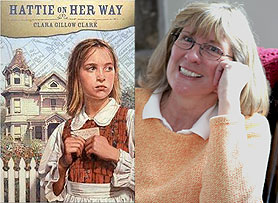
“Yes, choose a character, a story, and a setting, but be sure you have a strong emotional connection.”
(Photo: Clara Gillow Clark)
Breaking in
If you’re still reading this article, then you love historical fiction, you love your current project, or you are interested in giving this genre a try. Our expert authors have a few words of advice for those starting out.
Tips and Words of Inspiration
From Karen: “Take an acting class. It helps with character development, backstory, using your imagination, accessing your emotions, and learning to walk a tightrope with no net.”
From Bev: “Plot tends to be my bugaboo; and when I was in a recent funk over it, I surfed the Internet and found ‘The Plot Whisperer’ on You Tube. She’s got some great, five-minute lessons on not only plot but setting, voice, and character as well.”
From Clara: “This year, I show up at the page first thing in the morning and work for about an hour, if I can, before I get on with the demands of the day. Maybe this book will be published, maybe not; but what I really care about is writing. It’s all about the journey.”
From Darci: “As a novelist, even with a big publishing house behind me, I’m still self-employed; and while my books may be as special to me as my own children are, to the publishing world at large, they’re just another product to sell. Sometimes, it’s hard to remember that.”
From Adrienne: “Patience and diligence [are important tools for research]. One book’s bibliography leads to a series of new books on the topic . . . The Internet has made research immeasurably easier.”
Clara believes it is all about emotion. “Write what you care about emotionally. Yes, choose a character, a story, and a setting, but be sure you have a strong emotional connection.”
Bev thinks it is all about the story. She says that writers need to focus on the main character and his or her struggle, which must be compelling on its own, aside from the interesting facts and figures of the time period. She also advises that once you have an idea, look at what has already been published for the age group you are interested in writing for. You don’t want to write the exact book that has already been published. No one will buy it.
Darci simplifies it even further. “First, write a really, really great book.” She also says, “Be patient.” Publishing moves at a snail’s pace, so that’s why writers have to just go on and write the next book.
So Why?
Why do these ladies write in this genre? What makes them love it so?
“Learning so much about another world, another place, another time, so far from anything I have ever experienced,” Karen shares. “My character Charley, drove her stagecoach during the adolescence of America . . . when everyone in the world was finding their way to California to seek their fortune. The Civil War was looming its head, the West had become the romantic dream of every man and boy in America. It was thought to be the place of salvation . . . instead it destroyed, if not the body, certainly the soul, of almost all who found their way there.”
Like many writers, Adrienne also became captivated with her subject, which led her to write the novel. She had written two other books set in the ballet world, and she had come across stories about the people she decided to write about in The True Memoirs of Little K. She wasn’t scared off by the experience of writing a historical fiction novel either, as she is writing another one set in 1939 Los Angeles.
Darci and Clara both loved historical fiction as children, and this continued as adults. It was a natural progression, then, for these ladies to stick with this genre.
“My sister and I read all the ‘orange’ biographies in the town library, so it was natural that I would be interested in learning my own history,” Clara says. “I wanted to know why it was such a big deal for my mother to attend high school in the 1920s. The answer is written in my first novel, Annie’s Choice.”
Bev thought she hated history, and then she realized she loves finding little-known facts and investigating them further. Her excitement carries over to her writing, and she has the desire to share all of this enthusiasm with young readers.
So, do you have an idea? Have you come across a time period that is screaming to be turned into a historical fiction book? Then get busy with your research, but remember what’s important—the story and writing the best book you possibly can. Before you know it, you’ll see your historical fiction work for sale, and you’ll be busy on your next one, just like our five gracious experts.
***
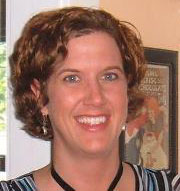
Margo L. Dill lives a freelance writer, editor, speaker, and teacher, living in St. Louis, Missouri. Her work has appeared in publications such as Grit, Pockets, True Love, Fun for Kidz, Missouri Life, ByLine Magazine, and The Chicago Tribune. She is a columnist, instructor, and contributing editor for WOW! Women On Writing. She is the memoir editor at High Hill Press and the assistant editor for the Sunday Books page in The News-Gazette. Her first book, Finding My Place, a middle-grade historical novel, will be published by White Mane Kids. High Hill Press will publish her children’s picture book, Lucy’s Listening. She writes a blog called, Read These Books and Use Them,
for parents, teachers, and librarians. She owns her own copyediting business, Editor 911, and is an instructor for the Working Writers Coaching Club and the WOW! Women On Writing Classroom. She loves speaking to writing groups, teachers, and young writers and has presented several workshops to all ages. When she's not writing or speaking, she loves spending time with her husband, stepson, daughter, and dog—Chester, a boxer. You can find out more about Margo by visiting her website: www.margodill.com.
-----
Enjoyed this article? Check out these related articles on WOW!:
Five Historical Fiction Pitfalls and How to Avoid Them
Diana Gabaldon's Great Escape
Preserving History: Teresa Funke